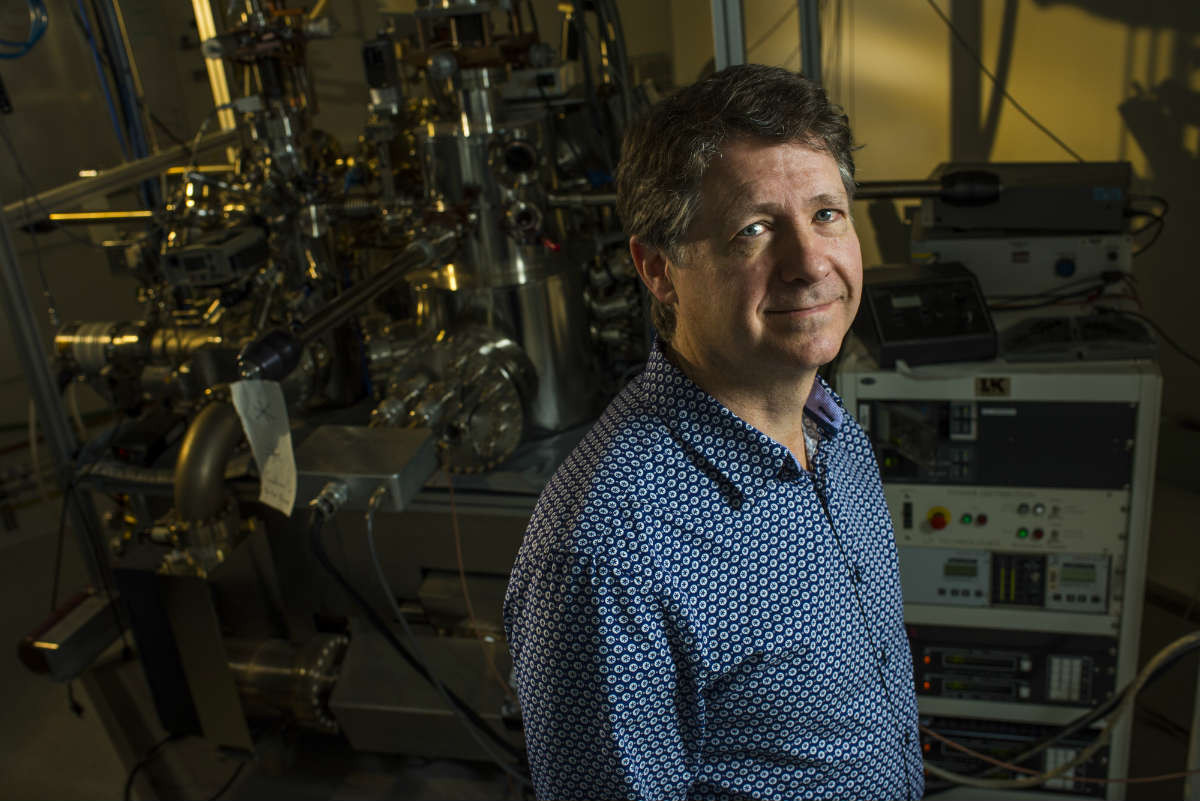
Robert Wolkow, physics professor and principal investigator on the project, and his team have announced the discovery of an atomic electronic simulator-a breakthrough that helps unlock the full potential of machine learning and neural networks. Photo credit: John Ulan
University of Alberta scientists have announced the discovery of an atomic electronic simulator: not just another computer chip
Targeting applications like neural networks for machine learning, a new discovery out of the University of Alberta and Quantum Silicon Inc. in Edmonton, Canada is paving the way for atomic ultra-efficient electronics, the need for which is increasingly critical in our data-driven society. The key to unlocking untold potential for the greenest electronics? Creating bespoke atomic patterns to in turn control electrons.
"Atoms are a bit like chairs that electrons sit on," said Robert Wolkow, physics professor and principal investigator on the project. "Much as we can affect conversations at a dinner party by controlling the grouping of chairs and assigned seating, controlling the placement of single atoms and electrons can affect conversations among electronics."
While atomic control over structures is not uncommon, making custom patterns to create new useful electronic devices has been beyond reach. Until now.
Though the tools of nanotechnology have permitted exacting control over atom placement on a surface for some time, two limitations have prevented practical electronic applications: the atoms would only remain in place at cryogenic temperature and could only readily be achieved on metal surfaces that were not technologically useful.
First proof of concept
Part atomic machine, part electronic circuit, Wolkow and his team have created a proof-of-concept device, overcoming the two major hurdles preventing this technology from being available to the masses. Both the robustness and the required electrical utility are now in hand. Additionally, the structures can be patterned on silicon surfaces, meaning scaling up the discovery is also easily achievable.
"This is the icing on a cake we've been cooking for about 20 years," said Wolkow. "We perfected silicon-atom patterning recently, then we got machine learning to take over, relieving long suffering scientists. Now, we have freed electrons to follow their nature-they can't leave the yard we created, but they can run around freely and play with the other electrons there. The positions the electrons arrive at, amazingly, are the results of useful computations."
Based on these results, construction has started on a scaled-up machine that simulates the workings of a neural network. Unlike normal neural networks embodied of transistors and directed by computer software, the atomic machine spontaneously displays the relative energetic stability of its bit patterns. Those in turn can be used to more rapidly and accurately train a neural network than is presently possible.
With the proof of concept in hand with interest from several major industrial partners combined with a publication in the prestigious peer-reviewed scientific journal Physical Review Letters, the realization of Wolkow's life's work devoted to creating an economic way to scale up mass production of greener, faster, smaller technology is imminent.
"Initiating and monitoring the evolution of single electrons within atom-defined structures" appears in the October 8 issue of Physical Review Letters.